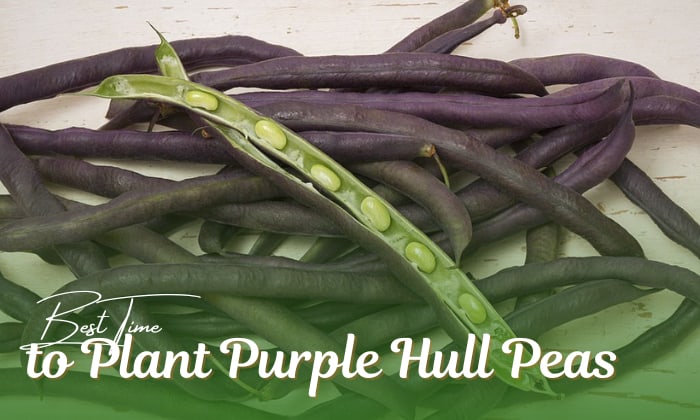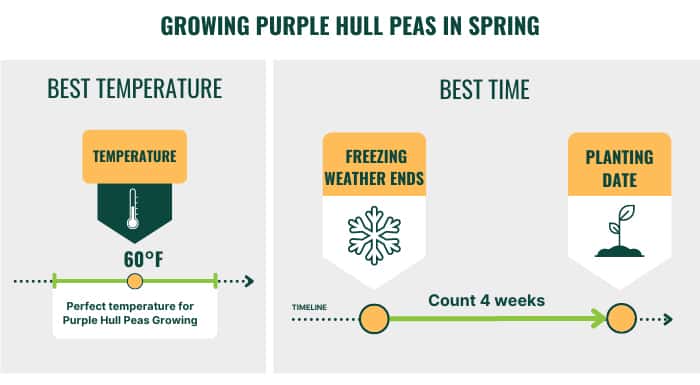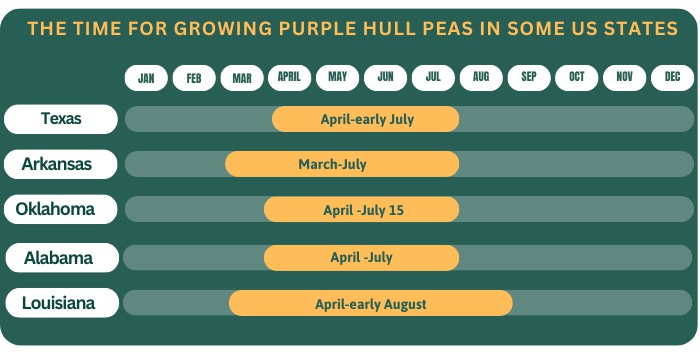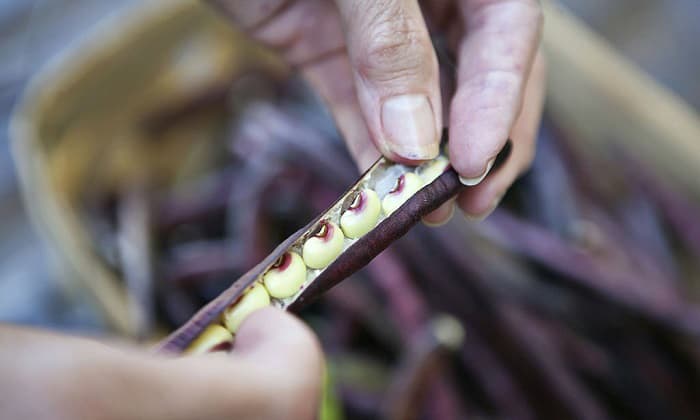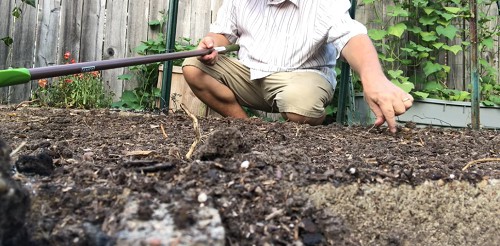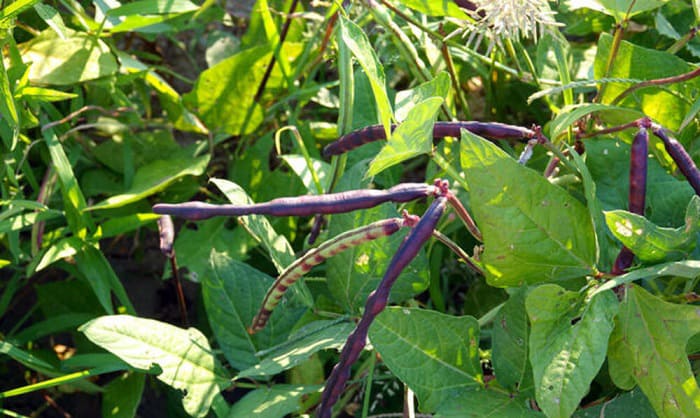Drought- and heat-tolerant, purple hull peas are among the best crops for southern gardeners. You may have heard of purple hull pea festivals in Texas and in Arkansas or spot them in farms within other states like Missouri and California.
For Southerners who are wondering when to plant purple hull peas, we are here to help. In short, it’s best to start this crop in April and May up until July or August. Read below for more tips on how to grow peas.
Table of Contents
Best Time to Plant Purple Hull Peas
1. Plant outdoors in spring after the last frost and indoors six weeks before it.
Spring is an excellent time for purple hull peas planting, particularly when frost has disappeared and soil temperatures have reached 60 degrees Fahrenheit.
These conditions allow them to grow well without experiencing seedling death. The warm weather of spring also resembles purple hull peas’ natural climate, which is hot and humid.
So, direct-sow seeds outside after the last frost or four weeks after freezing weather ends if you want to be safe.
Below are the estimated months for planting in different hardiness regions.
| Region | Direct-sow purple hull peas |
| Zone 7 | April |
| Zone 8 | February |
| Zone 9 | February |
| Zone 10 | February or earlier |
| Zone 11 | Any time, as long as the temperatures are right |
As for indoor planting, you can sow seeds six weeks before the final frost and then move them outside after. This option is recommended for growers in areas with cold climates, though note that purple hull peas have a reputation for not transplanting well.
In this case, you can put the seeds in small pots or grow them in containers at least 12 inches deep and have drainage holes. Use potting soil and keep the plants there until harvest as well. The seeds should be planted at a depth of one inch and covered with an inch of compost.
2. How late can you plant purple hull peas?
Purple hull peas growing is possible up until twelve weeks before the first frost. Since these crops thrive best in zone 7 to 11, where the first frost often falls within October 15 to December 15, July 23 to September 22 should be the latest time for planting.
Note, though, that these dates may not apply to zone 11, where frost is rare or non-existent.
3. Planting time in different states
Here is the time for growing purple hull peas in some US states.
- Texas – April to early July
- Arkansas – March to July
- Oklahoma – April to July (up to July 15)
- Alabama – April to July
- Louisiana – April to early August
Overview of Purple Hull Peas
1. Origin and characteristics
Purple hull peas are native to Africa, which explains why they’re so drought and heat-tolerant.
Despite being known as a type of Southern pea or cowpea, these plants are actually beans, and each of their pods can produce six to thirteen seeds for consumption, making them quite productive.
The pods that hold these seeds turn violet as they mature, but the seeds themselves are green with a purple-pink eye.
Aside from being easy to grow, purple hull peas are also rich in fiber, folate, iron, and amino acids. These plants are nutritious not just to humans but also to livestock, and if you like to observe deer, growing patches of this vegetable is a smart thing to do.
One can find many uses for purple hull peas in the kitchen, from blanching and braising to boiling and stir-frying. They pair well with salads, curries, soups, and rice.
2. Varieties of purple hull peas
Purple hull peas can be divided into three categories: semi-vining, vining, and bush purple hull peas.
- Regarding semi-vining varieties, they are in the middle regarding space requirements, being smaller than vining peas but bigger than bush ones. You can try out cultivars like California Pink Eye and Coronet for a taste of this plant type.
- Vining types spread the most aggressively and require trellises to hold them down.
Examples of varieties under this category include Pinkeye BVR and Mississippi Purple hull peas. The former has good resistance to mosaic virus, while the latter tolerates nematodes and fusarium wilt well.
- Finally, bush purple hull peas are the best option for gardeners with small space, since they form bushes instead of vines. Quickpick, Charleston Greenpack, and Top Pick purple hull peas all fall under this category.
Planting Guidelines for Purple Hull Peas
1. Preparing the soil and spacing
Till the top seven inches of the soil and incorporate two inches of compost into it. Usually, the compost should be enough to support purple hull peas’ growth, so fertilization is unnecessary.
Create rows for planting purple hull peas by digging six-inches deep trenches and spacing them eighteen inches apart. At this point, you’re ready to sow seeds.
2. Planting technique
How far apart to plant purple hull peas? We recommend sowing seeds at a depth of one inch and a distance of four inches. If you’re worried about low germination rates, plant more seeds and keep them two inches apart from one another.
Once they’re three inches tall, you can thin the plants down and leave only the healthiest seedlings intact.
It’s also possible to grow purple hull peas in raised beds if you’re up for it. Just plant at a rate of one seed per one square foot and follow the same recommendation above for how deep to plant purple hull peas.
Remember to stake the soil every four inches as well, and water it so that the top four inches of the ground are damp.
Care and Maintenance Requirements
Surround pea plants with mulch to control weeds and preserve moisture. If you’re unsure what to use, around three inches of wood chips or straw should do the job.
Water the soil regularly after germination so that the top inch doesn’t dry out, and make sure your purple hull peas receive seven to eight hours of full sun, preferably in a southeast exposure area of the home so that the sunlight is bright enough but not too harsh.
Regarding pests, it’s essential to look out for aphids, bean beetles, thrips, spider mites, and cutworms. Control aphids, spider mites, and thrips with insecticidal soap, bean beetles with spinosad or pyrethrum, and cutworms with soapy water sprays and carbaryl.
As for diseases like anthracnose and rust, there’s not much you can do but grow resistant cultivars.
Harvesting and Storing Purple Hull Peas
When to pick purple hull peas?
Purple hull peas are ready when they’re 50% purple. If you wait a bit longer, the pods will turn slightly darker in color and feel softer but not dry—this is the ideal stage for harvesting if you have not collected them earlier.
Do not leave the crops on the vines or bush past this phase, or the peas will turn brown. Once they’ve reached this point, you should only gather the purple hull peas to save their seeds for planting.
Here are some more tips on harvesting and storing this legume:
- Note down the number of days your cultivar takes to mature. You can pick it after this period, which is often 55 to 70 days from planting.
- On harvest day, snap the peas off the plant, then refrigerate them immediately if you can’t eat the seeds for several days.
- You can also freeze purple hull peas to keep them for longer, up to twelve months. Shell the pods first using a machine or your hands—just pry into the veins on the side of the pods, then shake the seeds loose.
Proceed to blanch them for two minutes before dunking the seeds in ice water. You can then put the beans into a freezer bag and store purple hull peas.
Frequently Asked Questions
Do purple hull peas keep producing?
They will if you pick them regularly, at least until frost arrives. These plants are also annuals, so you’ll have to reseed them if you want to eat peas every year.
How long does it take purple hull peas to sprout?
Purple hull peas will germinate in one to two weeks under warm weather. You can soak them beforehand to accelerate this process.
What temperature can purple hull peas tolerate?
Temperatures for purple hull peas should be no lower than 60℉ and no higher than 95 degrees. Within these limits, 70 degrees and higher would be optimal.
What should not be planted near peas?
You should not plant peas near alliums like onions, chives, and garlic, since they are biologically incompatible and may compete for the same nutrients.
How many purple hull peas to plant?
0.5 pound of seeds in a 100-feet row will yield about 40 pounds of purple hull peas, so think of how much peas your family can eat and plant accordingly.
Conclusion
If you know when to plant purple hull peas, it should be straightforward to produce an abundance of this crop in your garden. Purple hull peas are low-maintenance and do not require supplementary nitrogen like many other plants, making them a practical choice for growers.
Read more: Best time to plant sugar snap peas for fall harvest.

Hi, I am William – Floridayards’ digital content creator. My job is to find answers to all your concerns with thorough research and our team’s expert advice. I will also bring you honest reviews on the best products and equipment for raising your beautiful garden. Please look forward to our work!


